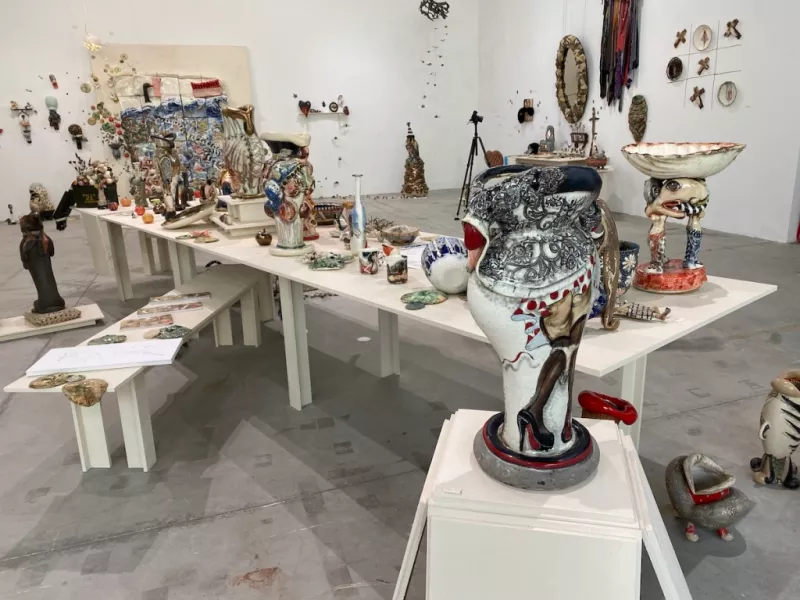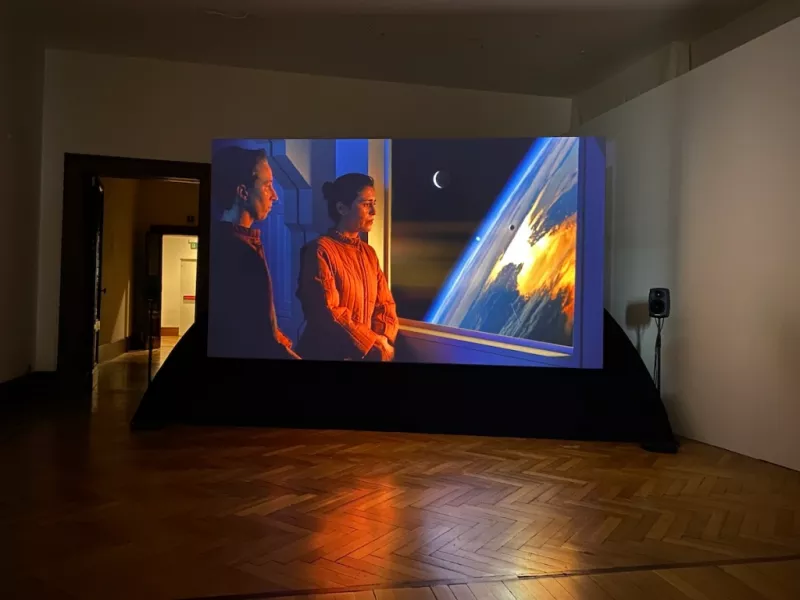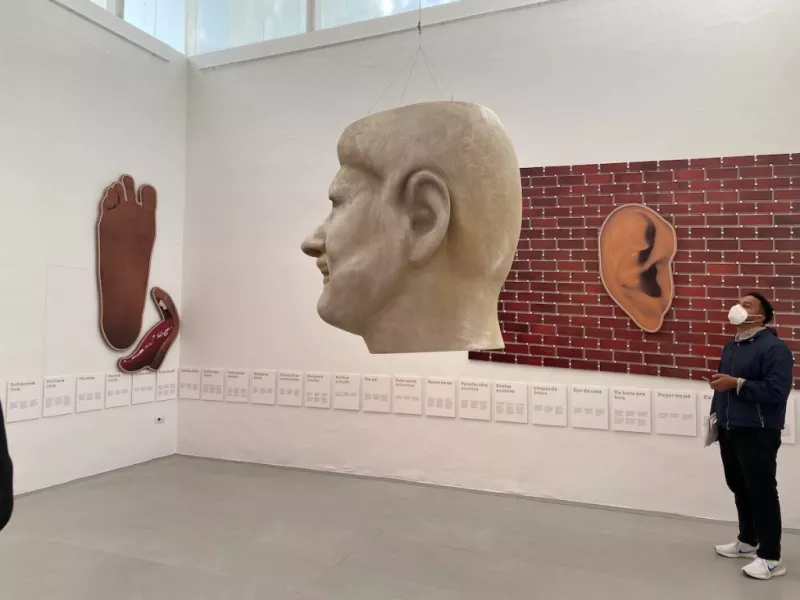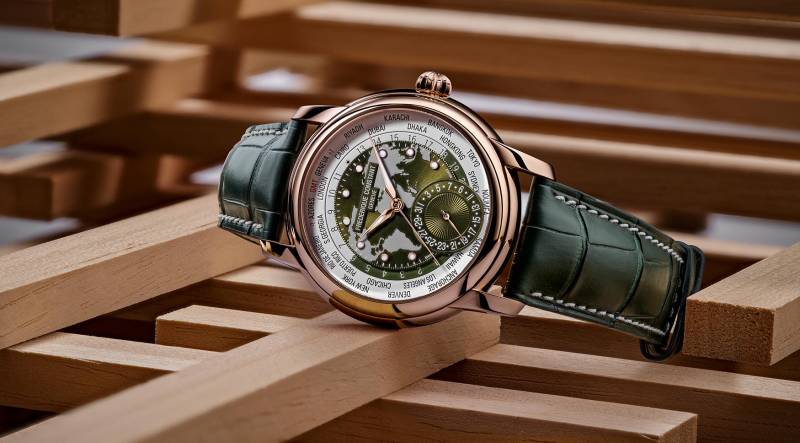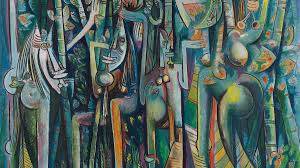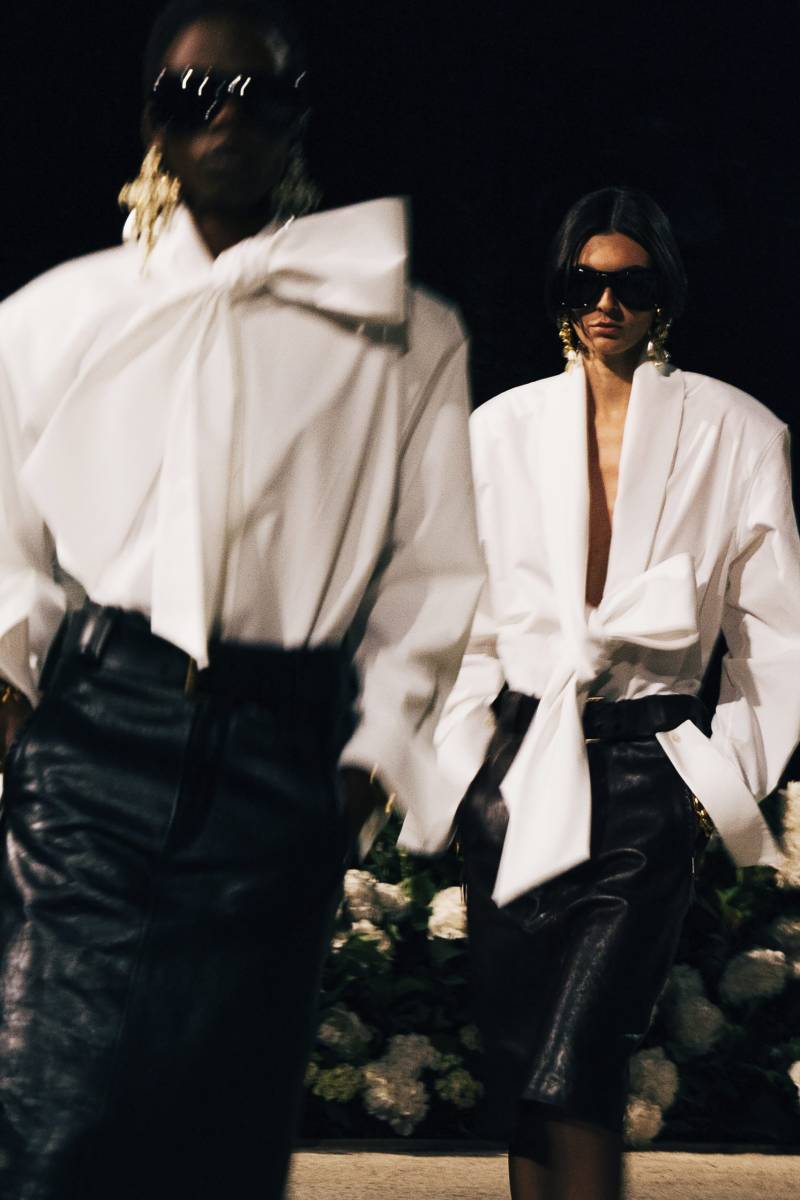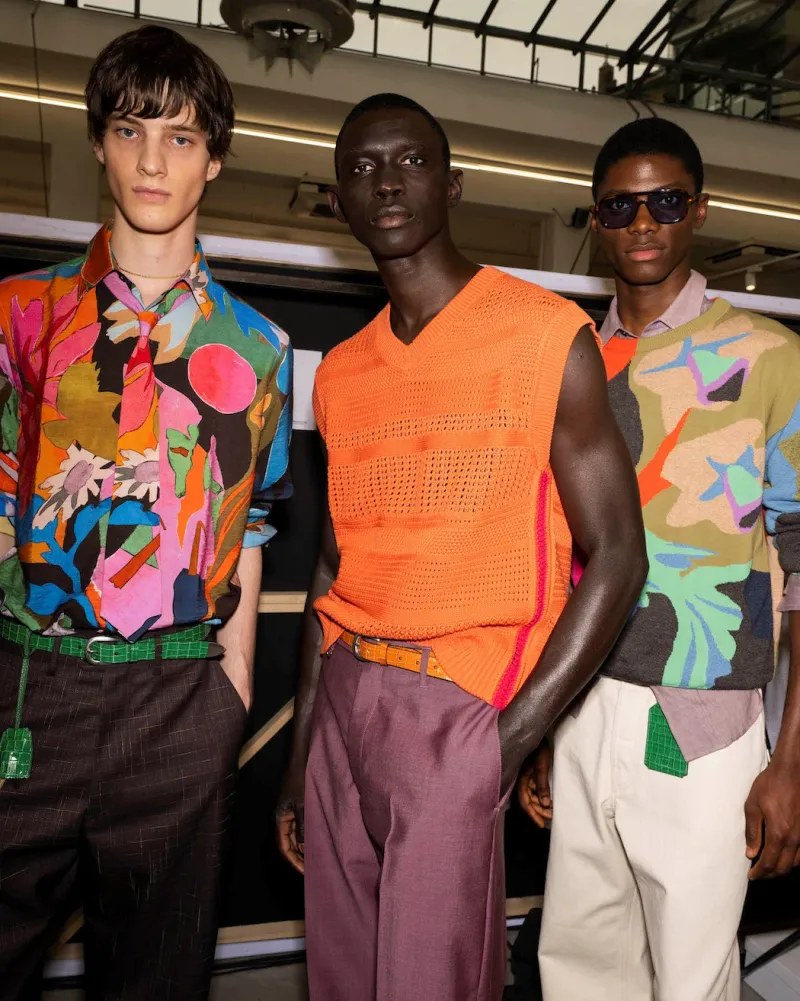As usual for the Venice Biennale, this year there are dozens of national pavilions—some housed within the Arsenale and the Giardini, the two main spaces, and many not. It is virtually impossible to see them all, much as one may be tempted to try. That poses a challenge: How does one pick out the most important ones?
To help out, we’ve assembled a list of the best pavilions at this year’s Biennale.
Marco Fusinato nearly blows off the walls of the Australian Pavilion with his sound installation DESASTRES, in which the artist performs live playing an electric guitar at an eardrum-splitting volume. (Earplugs aren’t supplied, but visitors to the pavilion would do well to bring their own.) As Fusinato plays his music, a complex technological loop spits out images that were generated by plugging in undisclosed terms into search engines. When I stopped by, illustrations from centuries-old books, photographs of protests and burning buildings, and more abstract imagery flitted by. Those pictures, which appear on a towering LED screens that runs almost the entire length of the pavilion, constitute what Fusinato has called a score.
When it won the Berlin Film Festival’s top award in 2018, Adina Pintilie’s Touch Me Not polarized critics with its clinical portrayals of forms of unsimulated sex rarely represented on screen. Pintilie has returned to that feature with far greater success for the Romanian Pavilion, which reconfigures some footage from Touch Me Not into two new video installations, as part of an ongoing research project. One is set across many screens in a room with reflective walls, the other on a piece of camera equipment in an adjacent gallery. In paying such great attention to disabled and largely non-heterosexual individuals, Pintilie intends to foster a more expansive definition of intimacy and greater empathy between her interviewees and the viewer, a device underscored by having the subjects stare right back at you.
“Overall, I like my body as it is,” one man with spinal muscular atrophy says. “It’s a gift.”
While most visitors will only attend the Giardini pavilion, this exhibition’s best portion is actually housed across the city, in the New Gallery of the Romanian Institute for Culture and Humanistic Research. The can’t-miss work there is a VR piece in which the viewer is allowed to look at, touch, and even see through the eyes of Pintilie’s subjects.
So many pavilions this year envision the structures in which they’re set as bodies that doing so became something of a cliché. Jonathas de Andrade’s Brazilian Pavilion was among them, but it stood out among the crowd because it did so with such dry wit. At this pavilion, you enter through one gigantic sculpture of an ear. You could, in theory, go out the other—that is, if you don’t get nearly trapped in the middle by a massive red plume of fabric that puffs up with air à la a lung. Throughout are other oddities: a sculpture of a severed tongue leaking blood, a suspended head that bobs up and down (and threatens to hit viewers that aren’t careful), and more. The fun and games end, however, when you encounter a video in which rhythmically cut zooms into people’s hands and feet are interspersed with shots of upheaval in Brazil. In de Andrade’s hands, his home country of Brazil is an ailing body in need of a cure.
Vampires that inhabit a slowly drifting spacecraft are the subject of Pedro Neves Marques’s offbeat Portugal Pavilion, a show that doubles as a smart play with horror and sci-fi trappings and a tender meditation on bodily transformation. Though there are several elegant poems printed on long sheets of paper, three films are the main attraction here, each of them focusing on five people who travel amid the stars with the aim of reaching some unknown destination. In one film, one of the passengers mysteriously pulls out a retainer fitted with a set of fangs and places it on a table; in another, the protagonists read X-Men comic books about mutated superheroes. While there’s nothing overtly queer in these films, vampires have been used as metaphors for people passing in a world where just about everyone else functions differently. Neves Marques’s creatures function similarly—they look like us, but they have been marginalized to a point where they no longer live on the same planet. In spite of it all, they find means of survival.
The Biennale’s big surprise was the Latvian Pavilion, a handsome assortment of too many loopy ceramics to count by the duo Skuja Braden. None of the sculptures here are of the dramatic scale typically seen in Biennale pavilions, but all of them impress by virtue of their weirdness. Some appear to be misshapen plates that loll off the side of tables, and others could act as vases; one is even a functional fountain, and another takes the form of a tiled wall. Fish, snails, serpents, Dalmatians, and buxom women appear throughout, as do images of the Buddha, a reference to the artists’ Zen faith. The so-bad-it’s-good maximalism could easily go awry, but it pays off in spades, offering a rare moment of pure and unfettered visual pleasure.
